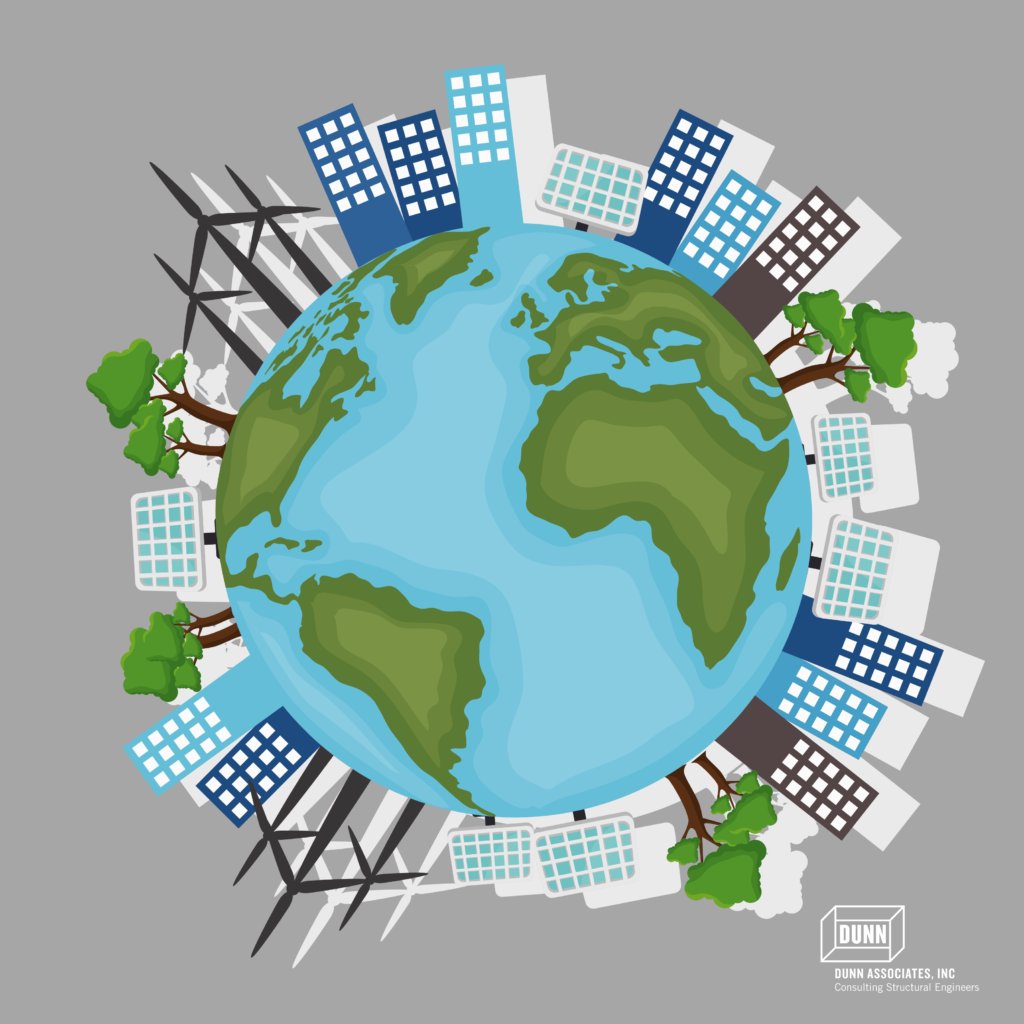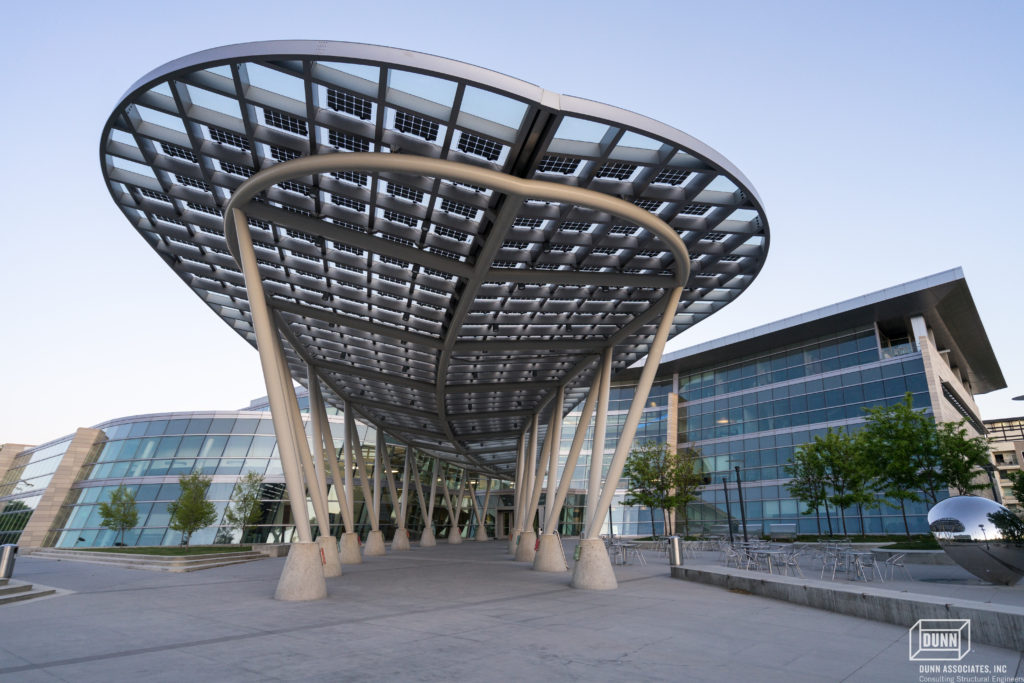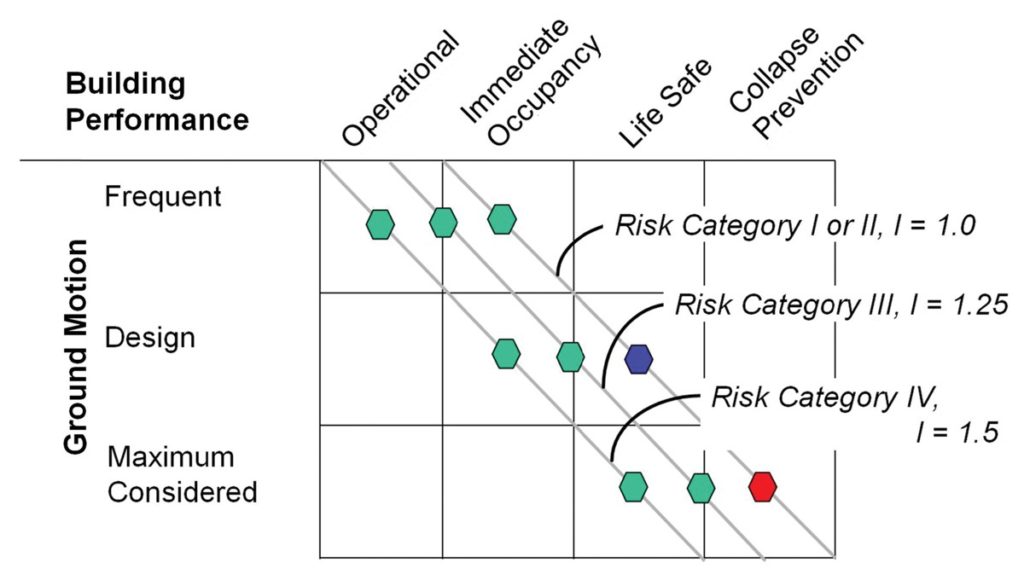
Imagine going to work every day and having the option to bike or take fast public transportation to get there. You get to choose to get some exercise or read a book instead of sitting in traffic. You arrive at work, and you see that the garden courtyard outside of the building has a few fresh strawberries ripe to pick. You pick a few, go inside and quickly rinse them, pop one in your mouth, and leave the few amongst the other picked produce in the break room that has been harvested by your coworkers. You get to your desk, and the morning sun has illuminated your workspace. You don’t even need to turn on a light. You adjust the temperature to be a warmer since the morning commute was a bit brisk. You know that this will not bother your neighboring coworker, who also has their own thermostat. You get through your morning conference calls, and you are ready for lunch. You take a handful of green beans from the produce to add to your lunch, and you sit out in the garden breathing in fresh air from the plants around you while you eat your sandwich. The sun is shining brightly, and you notice the solar panels on the roof of your office. You think about how all the work you have done has been powered by the sun and how today your office must be giving some energy back to the power company. You compost your uneaten sandwich crust, and recycle the can from your drink. You finish out the day’s work and you are excited to spend time with family in the evening.
This experience is what sustainable buildings attempt to provide. Not only is it a better cost savings for the life of the building for the owner, but a better experience for the users.
Sustainable buildings have been a hot topic of discussion since the mid 1990s when the United States Green Building Council (created the Leadership in Energy and Environmental Design (LEED) accreditation for buildings. Since then, hundreds of buildings have been accredited to various degrees. There are a few other accreditations and methods for designing sustainable buildings including, but not limited to, Green Globes and the Living Building Challenge. All of these methods have a large focus on access to sustainable practices such as public transportation or urban farming, as well as to the mechanical systems to reduce energy and water consumption. However, all of these systems also lack something critical to what it means to be sustainable and that is structural resiliency.

The most popular accreditations do take into account how the building structure influences the sustainability overall. Largely, it is done so by the materials used in construction – where they originate and how they were manufactured. Then in a much smaller note, there is some, albeit very little, added benefit to increasing the structural design to better withstand the elements. In fact, some of these accreditations discuss resiliency when it comes to mechanical systems operating post natural disaster, but do not quite address how the structure should be expected to perform. In fact, many times, the involvement and scope from the structural engineer in the process is very limited. I have come to believe that the reason is because of a lack of knowledge of what structural engineers are providing. I would like to shed some light on how structural engineers design buildings today and provide some thoughts as to how we can marry structural resiliency and sustainability in building design.
Utah has recently experienced a fairly moderate earthquake. The 5.7 magnitude earthquake that woke up a large population of the state did some damage to some buildings. From as little damage as “my patio crack at my house is a little larger now” and to as significant as an unreinforced masonry parapet shattering on a street in down town Salt Lake City. Our firm was busy that day. We spent a lot of time assessing damage for clients and building owners.
The Wasatch Front is considered a high seismic region. Utah has adopted the latest International Building Code, but the current building code does not require most buildings be immediately occupiable post-earthquake. In fact, buildings are designed to a specific “Risk Category” that range from I-IV. Most buildings in Utah are a Risk Category II. Figure 1 shows a graph that was published in STRUCTURE Magazine in July 2019 by Dr. S.K. Ghosh that illustrates how each risk category is supposed to perform.

Figure 1: Building Performance based on the Risk Category of a building. (Ghosh, 2019)
We will save the intricate details for a separate blog post, but essentially, the building is designed to protect life safety only for the Design Ground Motion. The Maximum Considered Ground Motion is determined by geologists and is then scaled down to achieve the Design Ground Motion. In other words – most of buildings are only designed to not collapse in the maximum possible earth quake that could occur in Utah. For comparison, we would categorize the most recent earthquake to be somewhere just above the Frequent Ground Motion.
Resilient structural design is a method of increasing the life and decreasing the cost of a building even through a major natural event whether it be seismic design, hurricane, typhoons, or others. In Utah, we are most concerned about the economical impact a large earthquake would have on our communities. While an upfront cost would need to be made to increase the risk category of buildings, it could considerably save our communities a considerable amount of money when a large earthquake happens. Many structural professionals have taken it upon themselves to advocate for more resilient designs. Similar to LEED accreditations, the United States Resiliency Council has created a rating system for resilient buildings.
Let’s circle back to the topic of sustainability. In our first thought exercise of going to work in a sustainable building, what would happen if an earthquake hit? Perhaps you would become unemployed while the building undergoes repairs. Maybe the damage ends up costing your company more than what it’s worth and it has to file for bankruptcy. The fact that many of the sustainable accreditations do not include more information on structural performance has driven a need for a separate rating system specific to structural design. However, it seems that decreasing the long term economic and environmental costs of a building are the main goals for both parties. Why are we separated? It is time for structural engineers to become a larger part of the sustainable building conversation and begin innovating creative ideas to make buildings more resilient and ultimately more sustainable. Together we can do more.
References
Ghosh, S. (2019, July). Is Seismic Design by U.S. Codes and Standards Deficient? STRUCTURE Magazine, 8-10.

Alexsys is one of our talented project engineers. She enjoys being outdoors; especially skiing and rollerskating. She is always willing to try something new and loves making spreadsheets! She loves to learn and solve problems with a team. On the weekends you will find her taking care of her many animals, out on a hike with her family, or skating with her dog.